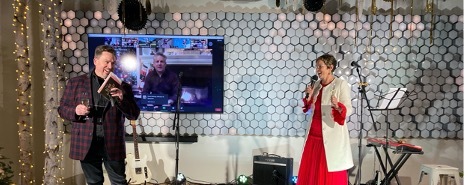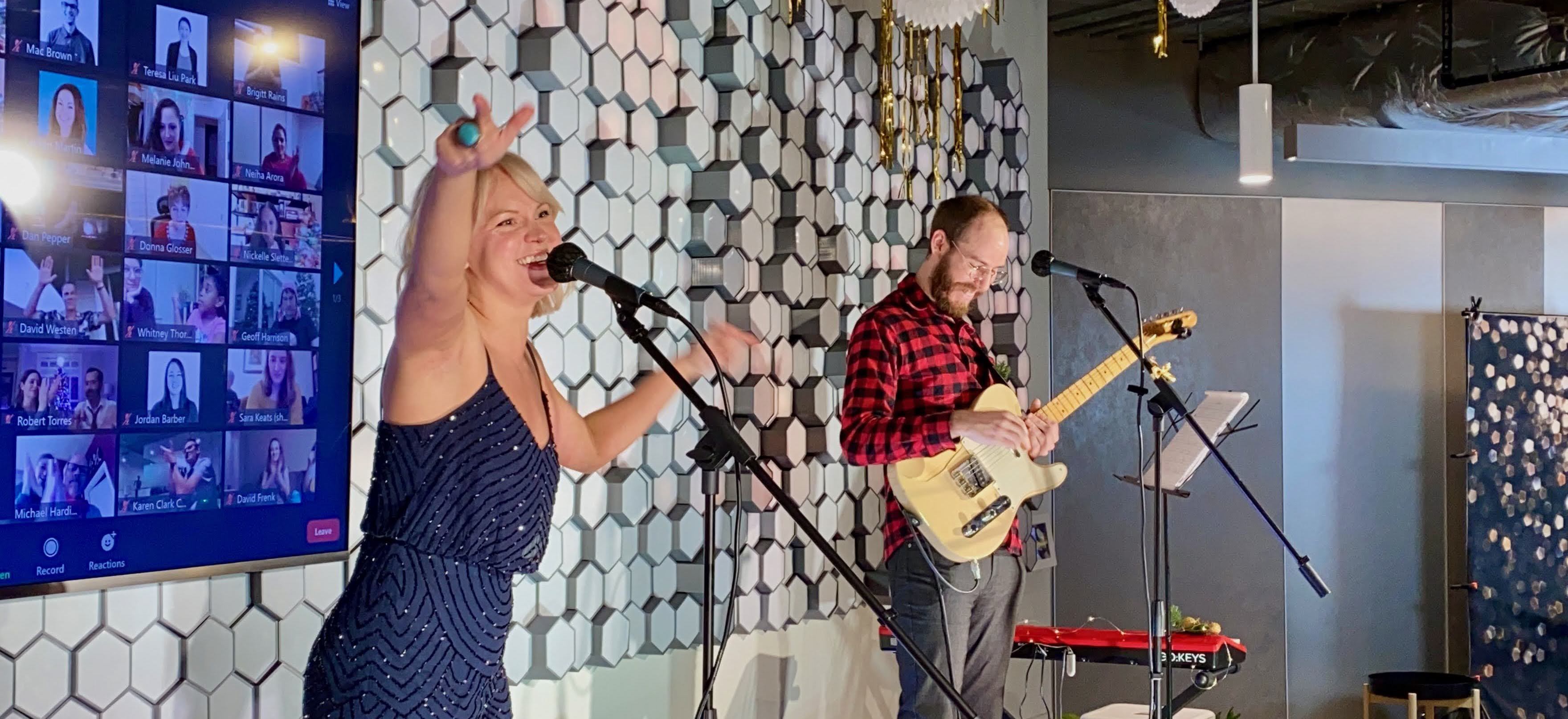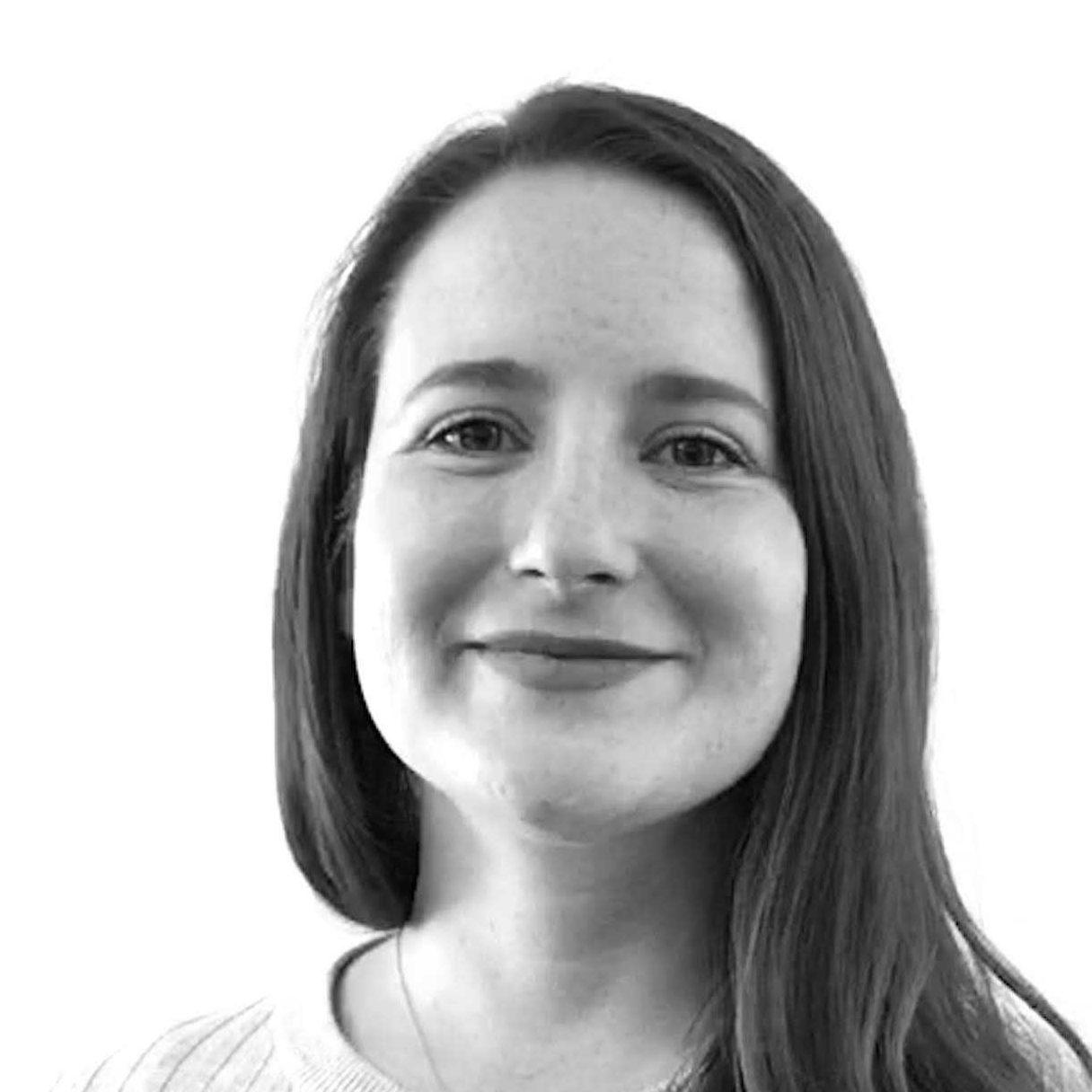
The realities of 2020 put our creative problem solving to the test. Like many of our industry peers, we pivoted to new ways of working and devised protocols to make in-lab research safe. When it came time to reimagine our holiday party, we went all out. We used our expertise in user experience to create an extraordinary, inspired Zoom event.
Our goal was to make a Zoom social event that felt dramatically different from any other meeting — something special for the holidays that would engage our team and their families and channel the fun and glamor that are hallmarks of a Blink party under normal circumstances.
Inspired by the innovations from Canlis, a beloved Seattle restaurant, we hosted an evening of specialty drinks, Zoom bingo, and top-notch live entertainment. We streamed the evening live from our Seattle studio. The festivities were hosted by CEO Karen Clark Cole and CIO Kelly Franznick.
Before the event, our studio experience team mailed out a “party in an envelope” including a formal invitation created by visual designer, Megan Greco; bingo cards and counters; and 1-ounce bottles of Addition bitters for the opening cocktail-making lesson by Chief Strategy Officer David Westen.
Following cocktail making, the event launched into three rounds of bingo with live singing performances between each game. Our superstar employees and performers were UX Director Irene Barber, VP of Operations Brigitt Rains, Studio Host Kiki Helland, and IT Generalist Tommy Cahill. Video and audio were broadcast quality and Blink’s IT team had half a dozen camera angles with seamless transitions as well as two sounds stages — not unlike your favorite variety show on TV.
We’re thrilled that over 100 employees and family members tuned in for the full two and a half hours. Despite initial skepticism of another Zoom happy hour, Blink staff reported it was the best Zoom experience they had all year, and that it would be the most memorable holiday party for years to come.
Kiki’s Kickoff for the Party
Studio Host and professional Actor, Kiki Helland, kicks off the evening with an exuberant welcome, COVID-19 precautions, and bingo rules.
Performance Highlights
30-second highlights of the evening’s fabulous performances. In order of appearance: Irene Barber, Brigitt Rains, Tommy Cahill, Kiki Helland.
Let the Party Begin! First Round of Bingo Highlight
CIO, Kelly Franznick, surprises CEO, Karen Clark Cole, by appearing on stage in a COVID-19 “protective bubble.” Once they contain their laughter, they kick off the evening with the first round of bingo.
Behind the scenes
The Blink studio experience team sat down to discuss the success and challenges of producing a broadcast at this scale. Studio experience manager Lynsey Lacher interviewed IT Generalists, Tommy Cahill, and Mac Brown, along with studio host and performer Kiki Helland.
Lynsey Lacher: Over the last couple of years, you’ve both spent a lot of time making sure our many live company events go well. How was this event different from other live events that we have hosted in our Seattle studio (pre-COVID-19)?
Mac: A solid budget, a clear goal, and creative freedom allowed us to progress this event to the next level. Typically, our live events utilize one lab tech on location. For this event, Tommy (in Seattle) and I (in San Diego) were able to put our heads together and work collaboratively. With COVID-19, it was completely new territory, and we were able to shape the event we wanted.
Tommy: Basically, we were given an idea — to host a fully remote event, with activities and entertainment, and to make it socially engaging for viewers — and asked to figure out how to do it within a limited timeline (six weeks). With access to lab resources and creative freedom, and by collaborating with a distributed team, we were able to create a bigger experience; we pushed boundaries and made it what we wanted without having to worry about people in the space.
Lynsey: Mac, how were you able to help from another city?
Mac: While most people have spent the last few months trying to maintain distance, I’ve spent so much time trying to do the opposite. Working from San Diego, it was always a challenge to be remotely connected to the Seattle studio. However, COVID-19 created a need for IT to remotely support Seattle labs if anyone on our distributed team got sick or felt unsafe being in the studio. Because of that precedent, I was able to easily take control of our streaming machine and support the team from afar during the event.
Tommy: COVID-19 pushed our IT team to make it possible for Mac to be able to help from our San Diego studio. He also made himself available to make it feel like he was a part of the Seattle studio. So, the infrastructure was already in place for remote in-lab support to use to our advantage. Our tech allowed Mac to remotely control the entire camera and streaming experience from San Diego. Normally, a live event would have one on-location person, and realistically, that person would only have the capacity to control one to two cameras but taking advantage of a distributed staff made more creative solutions possible.
Lynsey: What COVID-19 precautions did you take, and how did that impact the tech?
Mac: COVID-19 gave us the opportunity to create two sound stages, which we hadn’t used for live events at Blink previously. The stages made for a much smoother experience overall and allowed us to keep our performers and hosts safely apart. We also utilized mic covers as an extra precaution (each performer and host had their own mic) and made sure any support staff was at least 13 feet away from the stage, wearing masks.
Tommy: More space, fewer people, plus holding the event over Zoom, meant less risk for COVID-19. The sound stage also allowed for better transitions and improved production.
Kiki Helland: For safety, we followed our in-lab COVID-19 protocols: A total of only 11 people were in our 28,000-square-foot space with no staff gathered in groups. Everyone had their temperature checked upon arrival and filled out our daily health and safety questionnaire; everyone wore a mask unless they were performing on stage; performers and hosts were at least 6 feet apart from each other and more than 13 feet away from any support staff; windows were left open, and HEPA filters were close to the stage and run throughout the event.
Lynsey: What could have gone wrong, and how did we prepare for it?
Mac: Oh, man. This list is huge! Seven cameras all connected via Network Device Interface (NDI), multiple wireless mics, so much tech and gear in the space ... Anything could have happened — whether it was tripping over a wire or the network just going kaput! For me in San Diego, I was praying my home network wouldn’t cut out. For any live event production at this scale, a stable network is a must.
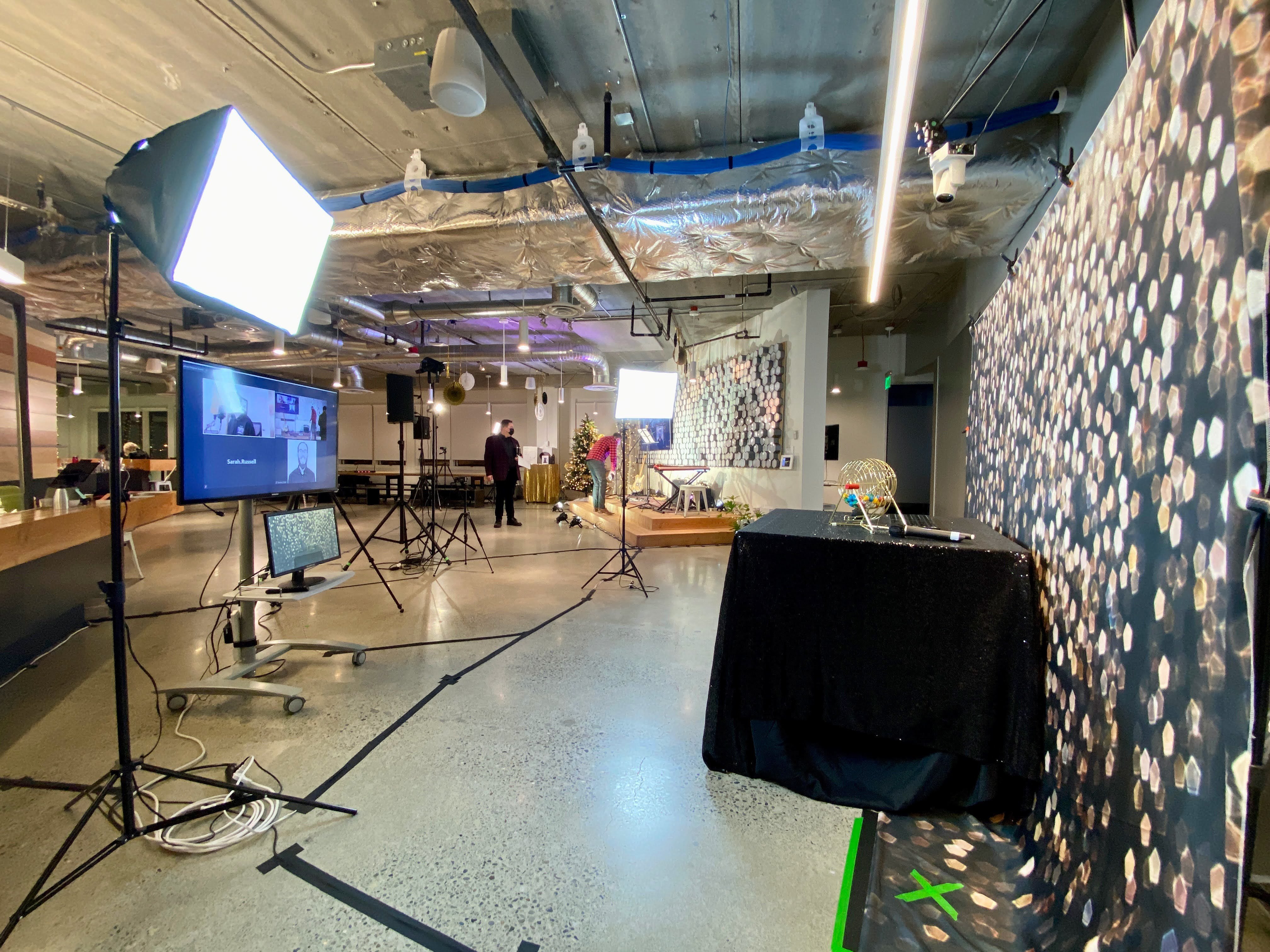
Tommy: In theory, anything could have gone wrong from a tech perspective. That’s why you want a team that includes well-trained, production-minded engineers who have experience working in production and are familiar with implementing best [production] practices (taping wires, fresh batteries in mics, etc.). Since we knew we’d have a lot to manage running the tech for the event, we hired part-time studio host, Sarah Russel, to act as a tech assistant on-site.
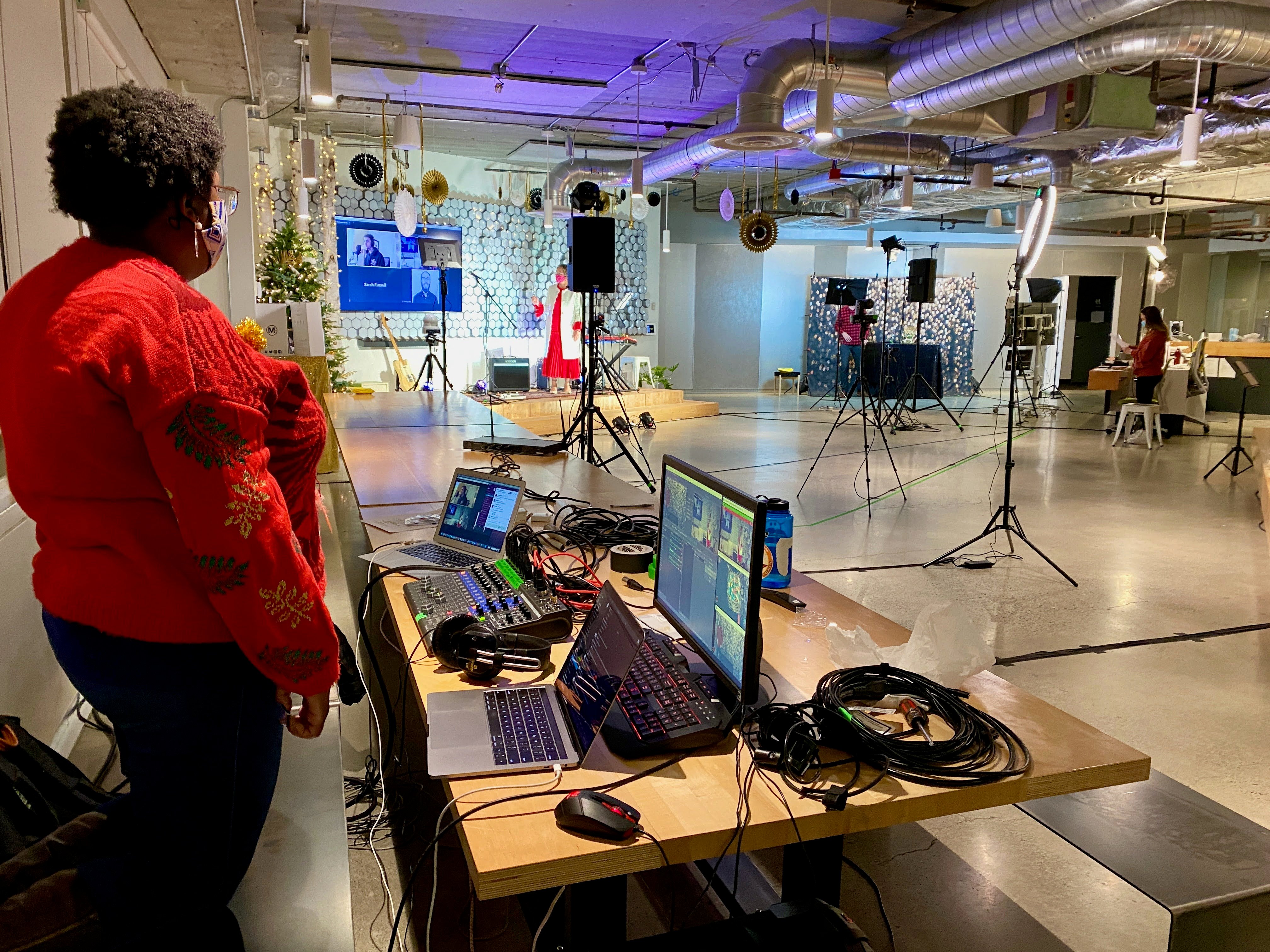
Kiki: We also had our San Diego and San Francisco studio managers, Michael Havran and Maria Szmagalski, monitor and manage participants on Zoom (sometimes you don’t want everyone chatting at once, and mute can be a useful tool).
Lynsey: What work experiences prepared us to do this?
Mac: Due to COVID-19, we now run remote research sessions every day, so this is no longer new territory for us. We now live in Zoom and knew a production like this was possible.
Tommy: Our team is uniquely prepared with backgrounds in theater and production experience. We also had access to remote-controlled NDI cameras and Open Broadcasting Software (OBS) for streaming.
For more information on our in-lab studies and COVID-19 procedures, check out this article by Kelly Franznick.
Lynsey: What details made this better than a typical Zoom meeting?
Mac: We put what would normally be streamed to YouTube or Twitch into a Zoom meeting. We took the mindset of an event we would have broadcast for audiences across the globe and just piped it straight into Zoom for our employees. Quality cameras, lights, mics, fantastic hosts, a schedule of performances, and great visuals created a really engaging experience.
Lynsey: What recommendations do you have for other companies looking to do hybrid in-person/virtual events?
Mac: Give yourself a solid budget — money for lighting, cameras, mics ... Fortunately, we have access to a lot of this equipment from our labs. High quality is really apparent, and it made the viewing experience so much better. No one wants to watch a low-res 480p. You have to have an MC or someone very comfortable with public speaking so that they are engaged with the audience throughout the event. For that matter, you should also consider how you want people engaged. Are they chatting and interacting, sitting back and relaxed, or actively entertained by the content?
Tommy: Make sure you assign Zoom moderators; you need someone from the production team to handle chat, muting, and moderating. Also, if this is your first production event, practice and see what works best for your space. Give yourself time to test out your ideas — be as creative as you want and test it out in a low-pressure situation. Don’t forget your dress rehearsal!
Kiki: Performing over Zoom is no different really from performing in person. To me, what's more interesting is figuring out how to design an event holistically that is engaging enough and energetic enough to keep people interested and forget they are watching something over Zoom. We planned out everything — from lights and sound to where people were supposed to stand with tape on the floor, timestamps, you name it. All of it was planned to make an engaging evening and make the attendees want to sit in front of their computers after a full day of sitting.
Biggest piece of advice? Plan out every minute and aspect; otherwise, people will lose interest and drop out. The tech was extremely thought out, but so were the people in the space and how the evening would flow. It was not only a party; it was a production.
Lynsey: What was your favorite part?
Mac: The event panned out really well. Many of our ideas came to fruition, which isn’t common when you have as many restrictions as we did (fully remote, limited staff, COVID-19, etc.). I think it’s also safe to say we blew the minds of our staff and gave them something they weren’t expecting, as many were skeptics going into the event—Zoom fatigue is real.
Tommy: I’m happy with the whole event; everything we planned for was realized. Our goal was to give people an experience that was warm and friendly and that would allow them to relax and enjoy themselves. We wanted to give them the holiday cheer they would normally find at a Blink party, and I’m happy we could bring that to a digital space.
Kiki: Because the event went really well, everyone will have higher expectations moving forward. That’s going to inspire us to have fun and be even more creative the next time around.
Lynsey: If you were to do it again next year, what would you do differently?
Tommy: We would have used a platform other than Zoom. It can be done [with Zoom], but it’s not robust enough. Other platforms, such as OBS, YouTube, and Twitch, are designed to better handle video and audio and produce higher-quality content. We experienced some latency issues that would have been avoided in another platform. We definitely crossed the line from a Zoom event into a streaming production.
Mac: We also could have hosted the event as a Zoom watch party, which allows communal watching, commenting, and chatting, but you don’t directly interact with the content. Our event centered around direct interaction with participants, like going to a live music event or comedy show. However, a good deal of interaction can happen on Twitch, and you have more control over content from a tech perspective and a higher-quality streaming experience.
